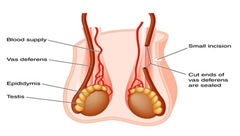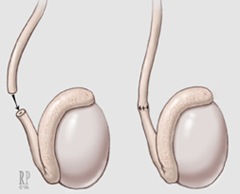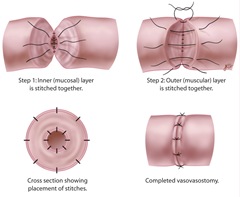Are you looking for information all about vasectomies? A vasectomy is a contraceptive method that blocks the sperm from reaching the penis when you ejaculate. After the procedure, you will experience regular semen secretion, but it will no longer include sperm. This will help prevent unwanted pregnancies. Your testes will continue to produce sperm, but they remain inside the scrotum until the body reabsorbs them. Every year, almost 500,000 men undergo a vasectomy as a means of birth control. Vasectomy is the best method to avoid pregnancy and has a higher success rate than any other technique.
Testicles produce the male sex hormone and sperm cells. Testes are at the base of the penis in the scrotum. Sperm cells are male reproductive cells that leave the testicles and fertilize the female partner’s eggs, resulting in a child. When the sperm leaves the testes, it passes through the epididymis, which is a coiled tube. The sperm remains in this tube until it is ready to leave the body—epididymis links with the vas deferens. The vas deferens is a long tube that connects to the ejaculatory duct.

(Source)
The vas deferens leave the lower scrotum region into the groin region or inguinal canal. From there, it reaches the pelvis region behind the bladder. The vas deferens forms an ejaculatory duct by joining with the seminal vesicle. During ejaculation, the seminal vesicle releases seminal fluid by mixing the semen with the sperm. Then, the semen passes to the urethra, leaving the body through the penis. When teh semen includes sperm, it can induce a pregnancy.
All About Vasectomies: How the Process Works
After a vasectomy, you can ejaculate without worrying about causing an unwanted pregnancy. The microsurgeon will block, seal, or cut the vas deferens, so the sperm does not reach the urethra.
Procedure for Vasectomy
A vasectomy is a painless and quick surgical procedure. In most cases, you can return home on the same day after the surgery. Here are two types of Vasectomy that you might undergo:
- A conventional vasectomy with a surgical knife or scalpel
- Vasectomy without scalpel
When you consult with a urologist, they will help you decide the best vasectomy technique for your condition. Let’s understand both vasectomy techniques:
1. Conventional Vasectomy
In this technique, the doctor will numb the scrotum by injecting local anesthesia. They will then make two tiny cuts on the scrotum, over the skin. This helps them reach the vas deferens. The surgeon will take the tube out of the testicles. They will cut a small section of the tube and remove it. They will then close both ends of the tube by sealing or stitching. They might also use heat to seal vas deferens. The surgeon will then stitch the scrotum’s skin. The stitches usually dissolve after a week or two.
2. No-scalpel Vasectomy
During no-scalpel vasectomy, the surgeon will first numb the scrotum with the help of local anesthesia. They will puncture the scrotum’s skin by making tiny holes. This will help them access the tubes easily. In contrast to a conventional vasectomy, a no-scalpel vasectomy does not use a scalpel.
The surgeon will then take the tube out of the hole and cut it. They will use the same technique to cut and seal the vas deferens. This technique is less painful and involves fewer complications. Furthermore, the surgeon will not stitch the holes in this technique.
How Effective is the Vasectomy?
No birth control method is 100% effective, except for celibacy. After a vasectomy, sperm will only travel to the other end of the vas deferens in rare conditions. In numbers, that’s one in 10,000. That is why this technique has the lowest failure rate. Surgeons have been using this technique for many years, and the results are most effective and safe.

(Source)
A professional surgeon will regularly check the semen sample to ensure that it does not include sperm. Once the surgeon confirms that you no longer ejaculate sperm, you can have sexual intercourse without the need for contraceptive methods. If they identify the presence of the sperm, you need to undergo another vasectomy procedure.
Benefits of Vasectomy
There are numerous benefits of undergoing a vasectomy as a birth control technique. Vasectomies have an efficacy rate of more than 99%. Similar to female tubal ligation, Vasectomy is the one-time method proving permanent contraception. In contrast to tubal ligation, you will find that a vasectomy:
- Is effective
- Is simple
- Performed on an outpatient basis.
- Include fewer complications
- Is budget-friendly
All About Vasectomies: Conclusion
If you prefer a birth control method with greater efficacy than a condom or tubal ligation, choose a vasectomy. Once you discuss the benefits of a vasectomy with the surgeon, you will learn how effective this procedure can be. Consult with Dr. Yaniv Larish, top NYC urologist & microsurgeon.
Call to schedule an appointment at (646) 862-5500.



